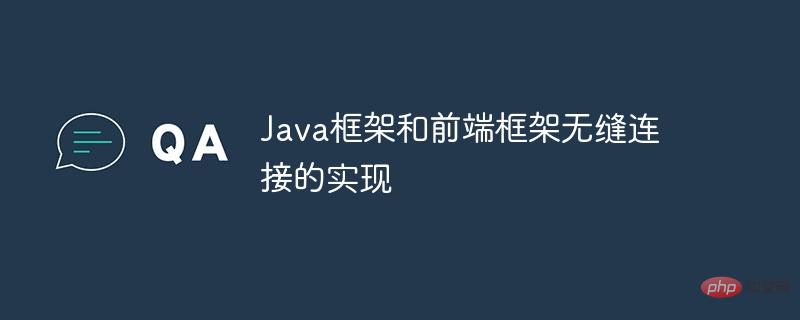
In modern web development, seamlessly connecting Java frameworks and front-end frameworks is crucial. By integrating the back-end capabilities of Java and the UI capabilities of front-end frameworks, you can build robust and efficient applications. Backend configuration: Create classes that map static React resources to the / endpoint, allowing the frontend to load backend files. Front-end configuration: Use useEffect hooks to get data from the backend, and useState hooks to store and process data. Practical case: Spring Boot backend provides REST API, React frontend obtains data through useEffect, and uses useState to manage data.

The realization of seamless connection between Java framework and front-end framework
In modern Web development, seamless connection between Java framework and front-end Frameworks are essential for building robust and efficient applications. By integrating the two technologies, developers can take advantage of the powerful back-end processing capabilities of Java and the superior user interface design capabilities of front-end frameworks.
Here's how to establish a seamless connection between a Java framework (such as Spring Boot) and a front-end framework (such as React):
Backend (Java) Configuration
@SpringBootConfiguration
public class ReactConfiguration {
@Bean
public ClassPathResourceHandler reactStaticResourcesHandler() {
ClassPathResourceHandler handler = new ClassPathResourceHandler();
handler.setCachePeriod(0);
handler.setPathPatterns("*.*");
return handler;
}
}Front-end (React) configuration
// App.js
import { useEffect, useState } from "react";
const App = () => {
const [data, setData] = useState([]);
useEffect(() => {
fetch("/api/data")
.then(res => res.json())
.then(data => setData(data))
.catch(error => console.error(error));
}, []);
return (
<>
...
</>
);
};
export default App;Practical case
Suppose we have a Spring Boot backend that is exposed A REST API to retrieve data. We use React as our front-end framework to display this data.
In the Java backend, the ReactConfiguration class maps static React resources to / endpoints. This allows React apps to load the necessary JavaScript and CSS files from the backend.
In the React frontend, the App.js component uses the useEffect hook to get data from the backend when the component is mounted. It then uses the useState hook to store and process the received data.
With this integration, the Java backend and React frontend can communicate seamlessly, with the backend handling business logic and data processing, while the frontend manages the user interface and interactions.
The above is the detailed content of Implementation of seamless connection between Java framework and front-end framework. For more information, please follow other related articles on the PHP Chinese website!